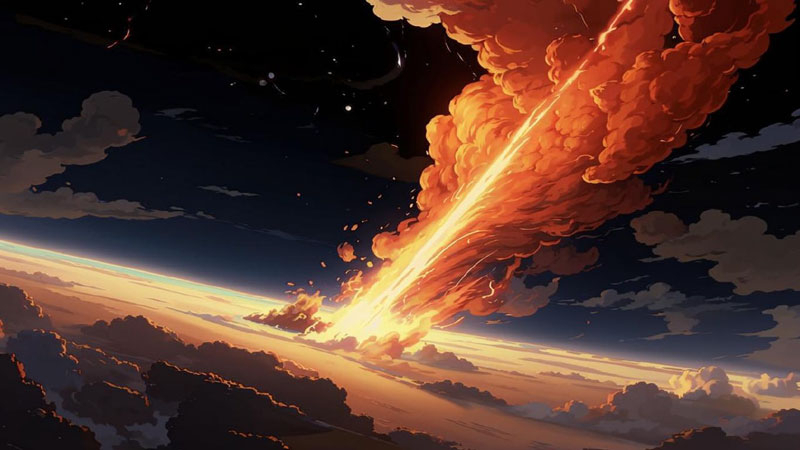New observations of asteroid 2024 YR4 made it possible to collect more data about its trajectory. Additional information forced scientists to increase the chances of this celestial body to a direct collision with the ground. Now they are 2.2 %. The date of the probable collision remains the same – December 22, 2032. But even in the worst case, the asteroid will cause moderate damage to the planet, leaving behind the destruction area of not more than 100 km in diameter.

Image source: AI generation Kandinsky 3.1/3DNews
Asteroid 2024 YR4 was discovered on December 27, 2024 by the automatic system of the latest ATLAS warning in Rio Urtado, Chile. According to the first estimates, his chances of clash with the ground in 2032 amounted to 1.2 %. This immediately made the newly discovered heavenly body the most dangerous in the ESA and NASA lists with a list of asteroids with non -equal chances of collision with the planet in the future.
During January, 2024 YR4 observed three observatory, including a very large telescope of the European Southern Observatory (ESO). It was their observations that made scientists increase the probability of a clash of 2024 YR4 with the Earth in 2032 to 2.2 %.
Now the asteroid is removed from the Earth and is located about 45 million km from the planet. It moves in orbit around the sun and will return to the ground in 2028. The new rapprochement will clarify the size and orbit of the asteroid 2024 YR4. Most likely, as happened in the past, everything will not be so scary, and the asteroid’s chances of a clash with the ground will decrease significantly.
The possible size of the asteroid fluctuate from 40 to 90 m. Even in the worst scenario, falling to the Earth of the celestial body of 90 m in the diameter will cause destruction within a radius up to 50 km from the epicenter. This can be dangerous in the populated places of the planet, but the overwhelming part of the Earth is not populated. In addition, the asteroid will fall in the area of the equator, where there is much more water than land, although there can be even more destruction from tsunami.
We add that the greatest threat to our planet is not asteroids, but by long -period comets. They fly from the Oort cloud in absolutely unpredictable orbits and can become dangerous completely unexpectedly. Moreover, a new class of so -called dark comets was found in the solar system. Such also draw up unnoticed, without leaving the tails that give them out.